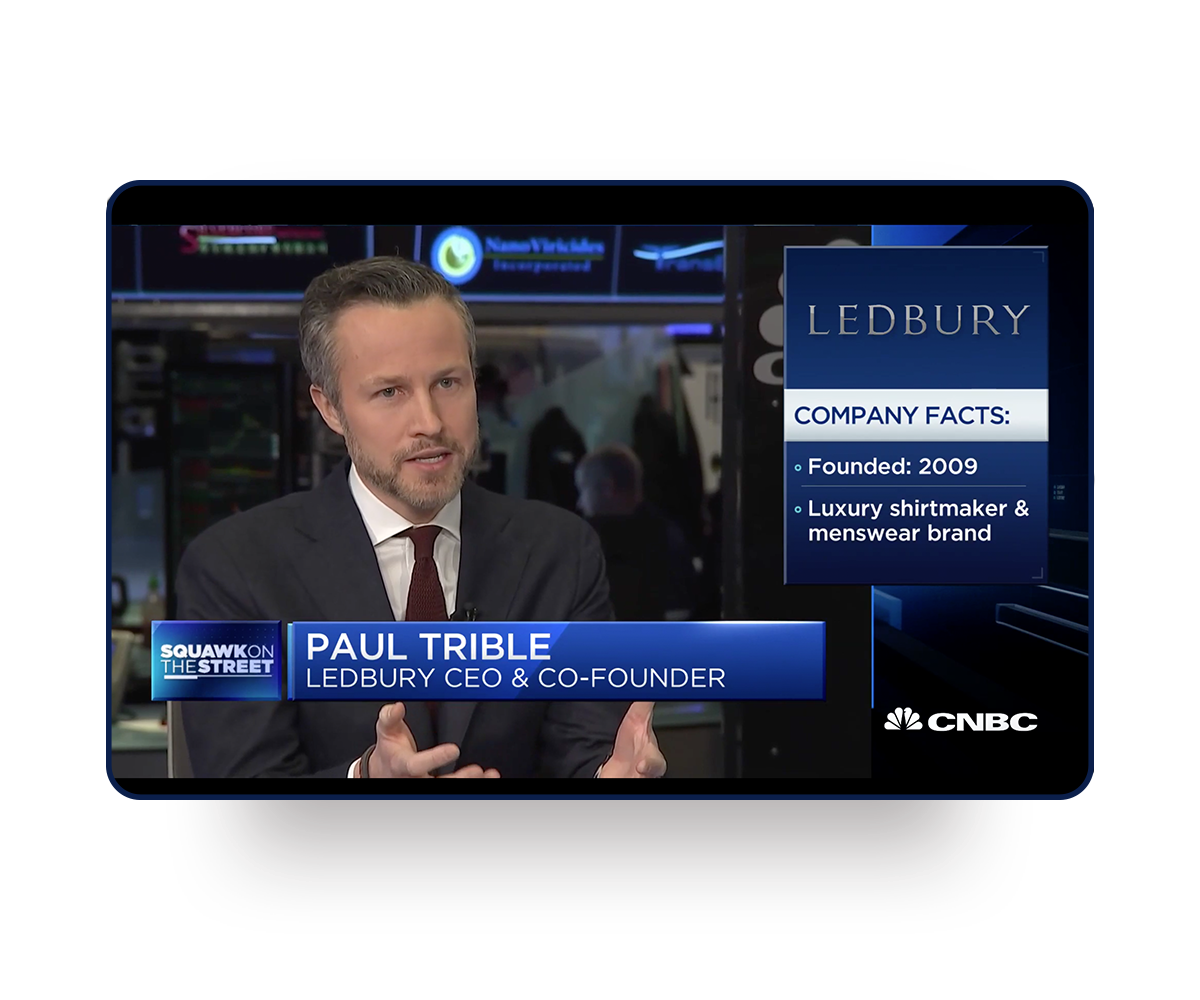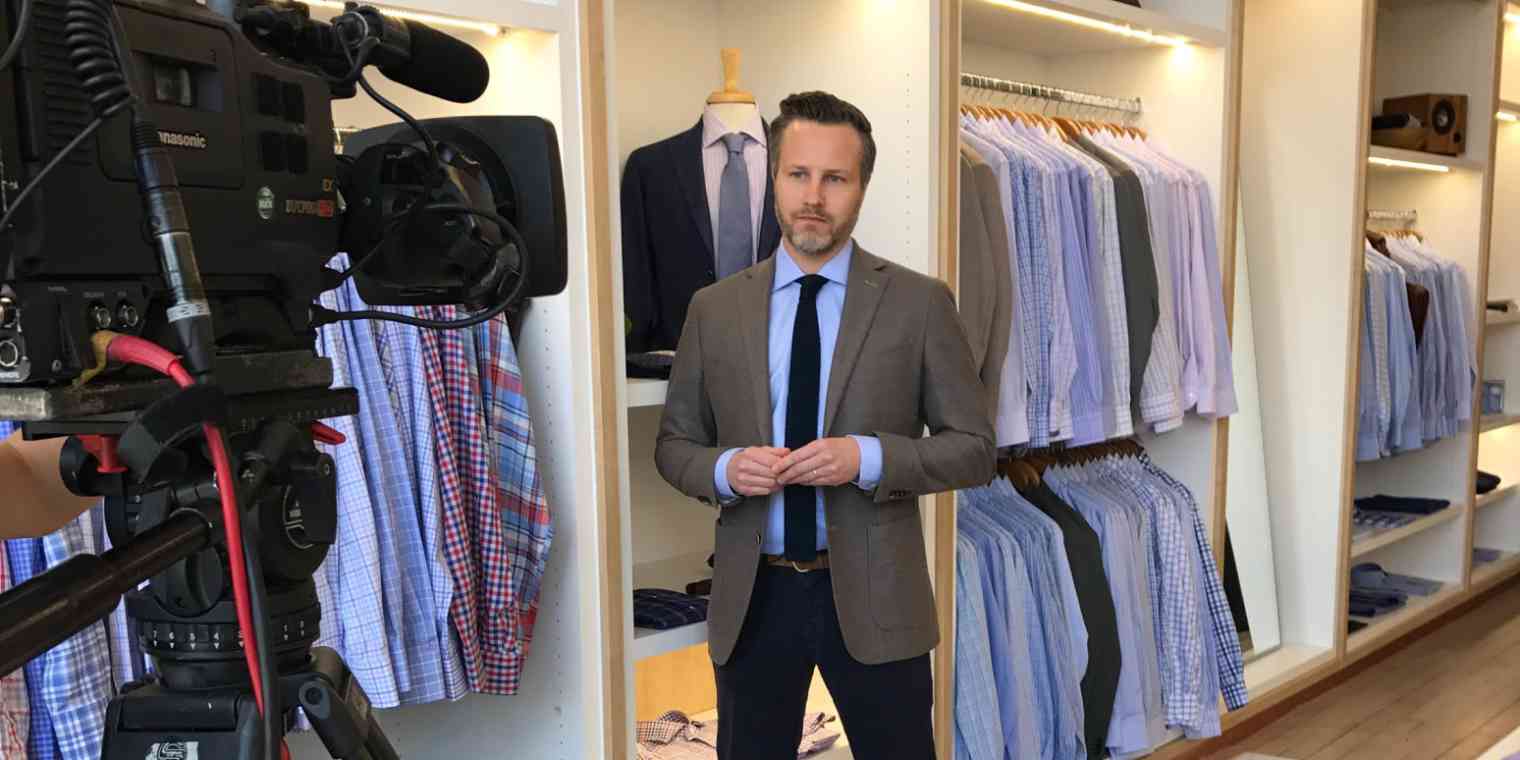Great news: you just scored a big press interview to promote your business. The story will expose your brand to the perfect new audience and drive meaningful traffic to your website. So…don't blow it.
Yes, just as quickly as the excitement for the opportunity arrived, the realization that you now have to do an interview sets in.
I get it—press interviews can absolutely be intimidating. The resulting coverage represents a significant opportunity to acquire new customers, drive sales, or raise awareness, and you want to be sure to represent your brand well and really compel the audience to check out your company. On top of that, you have to contend with adrenaline and nerves in the moment. You may be thinking, "So many other business owners are so polished and articulate in their interviews. How am I going to pull that off?"
Deep breath.
A successful interview is usually the result of good media training: preparation and practice in advance of an interview. I've trained dozens of CEOs and spokespeople, and I've also applied the practices myself when promoting my boutique PR firm, Golden Word. I get nervous before interviews, too, so I know both sides of this experience.
I've outlined a few simple strategies to help you communicate your messages and handle potential tough questions, and I've broken it down into what to do before, during, and after the interview. With these lessons in your back pocket, you can feel confident in your interview.
The billboard
First things first: let's get your mindset straight. Think of the interview and resulting press coverage as creating a billboard for your company—and you get to choose the message and appearance.
An interview has a natural give and take, which means you have more control in an interview than you might think. Every time they ask you a question, it's an opportunity to advance your agenda.
Your interview should have two base goals.
Contribute to the editor/reporter's story and satisfy their journalistic needs.
Showcase your company via this story.
These goals can be equally weighted. If you don't do the first, the story may not run. But if you don't do the second, what's the point of the story? Remember that you have control over how you answer questions and what those responses say about your business.
Before the interview
One of my clients, Ledbury CEO, Paul Trible, often appears live on CNBC, MSNBC, Bloomberg, and more to discuss his shirtmaker and menswear brand. Producers regularly comment that he's a consummate guest: he's at ease on camera and has a command of the material.

You might chalk this up to him being a natural, and while I think that's true, it's also because Trible has a strong preparation habit.
Once you've received an interview request, there are a few key steps to set you up for success in the interview:
Research
To start, you have to know who you're talking with and to. Research the media outlet and reporter. You want to have a good sense of their style and interests. Also, be sure to review how they've covered similar topics in the past. If needed, it's ok to ask for more details on what they'd like to discuss with you.
You also want to consider the audience on the receiving end of this story. Who are they, and what do they care about?
Prepare
With this research in mind, it's time for the most important step of your preparation: identify the top three messages you want to convey during the interview. Your first message may be obvious but necessary: a clean definition of your business. (We'll come back to your top three messages during the interview, so make sure you get them ready.)
Also take a moment to identify what you don't want to say. Write these things out, and over the course of the interview…don't say them. I have so many clients who, after an interview, wish they hadn't shared a particular piece of information.
Practice
There's a reason some people sound so natural in an interview. When Trible has an interview, for example, he and I make a list of possible questions, and he shuts himself in a conference room to practice his answers. The practice serves not to memorize answers but to develop a muscle memory that he can call on during the interview.
During the interview

You've done your prep work, and now it's time to nail that interview. Let's talk about what you want to accomplish—and what to do when you get stuck.
Rather than trying to remember everything, focus on completing three jobs over the course of the interview.
1. Set a foundation for the conversation by sharing a brief elevator pitch introducing yourself and your company. No matter what their opening question may be, start with this context. This ensures the reporter and ultimately the audience understand the brand. Don't take that understanding for granted.
2. From there, it's time to answer questions and share your story. Remember that you are in control of the interview: they ask you questions, but you give the quotes. Go back to those top three messages you prepared before the interview. Over the course of the interview, make sure to weave each one into the conversation.
If you're doing a phone interview, keep notes on your top three messages close by. You don't want to sound like you're reading your answers, but the notes provide a reminder. These three messages are your safe harbor. When in trouble, you can always pivot an answer back to topics you want to talk about.
As the interview wraps, check your top three messages. Did you get them all across? If not, there are a few ways to fit them in. Often, reporters will ask if there's anything else they're missing. This is a great time to insert that. Or you can simply add the topic yourself: "There's one more thing…" If necessary, you can always email it to the reporter after the interview, but it's better to get it in live.
3. As you go, note any follow-up items: an image request, a figure you need to double-check, or another interview the reporter asks for. We'll take care of those after the interview.
Sometimes there can be obstacles in an interview. It could be as simple as losing your train of thought, or something more complex like getting asked a tough question from a reporter on a topic you don't want to discuss. Remember, just because they've asked the question, it doesn't mean you have to answer it.
Whether you're fumbling or strategically evading a question, here are tips on navigating these moments:
Don't be afraid to buy yourself time. It's ok to take a moment to gather your thoughts. Responding with "that's a great question" is an easy way to earn a few extra seconds to think.
If you don't have the information immediately on hand, this is not the time to guess or try to recall. Instead, say, "I'll confirm and follow up with you."
If you don't want to answer a question, don't! You could directly state policy not to address a given topic, like "We don't comment on financials." You could also simply pivot away from the question: "That makes me think about [the topic I'd rather discuss]." Avoid "no comment" or "I don't know." If necessary, you could use, "I'm not sure."
After the interview
Your interview is complete, but your job isn't done yet. Follow up with the reporter to offer thanks and connect dots on outstanding needs. Complete any follow-up items brought up during the interview: additional information, images, next steps. If you don't already know, this is a great time to ask when the story will run, so you can prepare your channels for the influx of traffic.
And, of course, once the piece runs, be sure to read/watch/listen closely, so you can learn and improve for next time.





